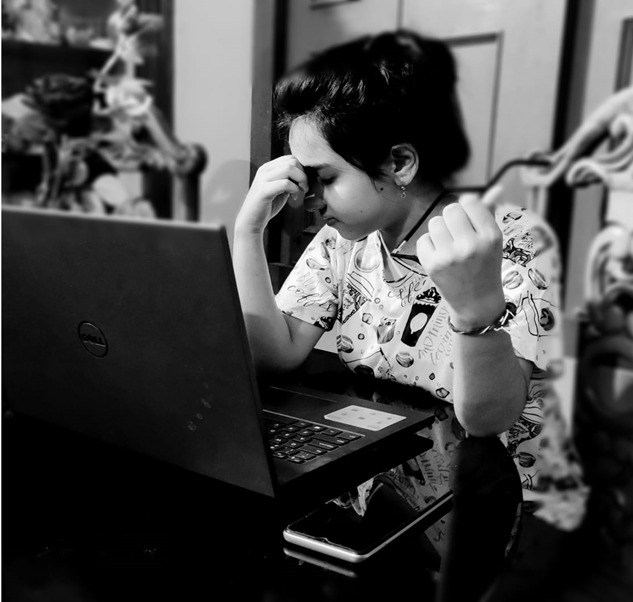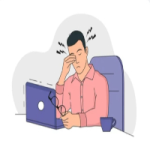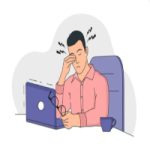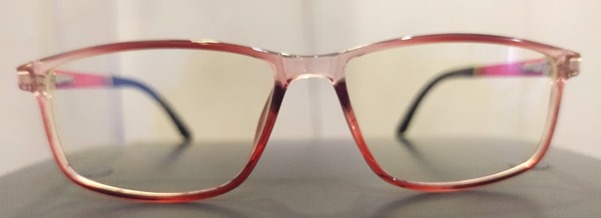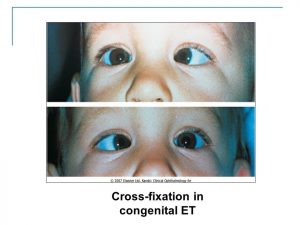Asthenopia is more commonly known as Eyestrain or Ocular fatigue. It is a very common condition that occurs when eyes become tired from intense use. Staring at a computer screen for long periods or to see in dim light are common causes. Prolonged use of digital devices has become such a common cause of Asthenopia that it has been dubbed Digital eyestrain. The mandatory digital leaning has emerged as a method for current teaching and learning in most of the Schools and Universities with the footfall of the COVID-19 Pandemic. Without any specific guidelines, it is now a routine for children to spend most of the time (8-12 hours) attending online classes in front of a computer or mobile screens. These digital device can cause digital eye strain. A large amount of near work is the main cause of Asthenopia. Asthenopia may result from the following:
1)Uncorrected refractive errors
2)Defects of Ocular Motility
3)Accommodation and convergence insufficiency
1) Asthenopia in Uncorrected refractive errors:
Small to moderate refractive errors cause most of the symptoms, as in large refractive errors, the patient can’t compensate and supports to monocularity or learns to tolerate the resultant reduced Visual Acuity. On the other side, in small to moderate refractive errors, the defect is compensated by the patient with increased muscular effort which then results in muscular fatigue and thus asthenopic symptoms, mainly seen in Hypermetropia and Astigmatism.
A. Hypermetropia: In a hypermetropic patient, the eye at rest receives only blurred images on the retina and in order to get clear images, patient has to increase the refractive power by continuous activity of the ciliary muscle, to nearer the object ,the more powerful must be the effort.
In presbyopia, it attempts are made to stimulate accommodation when it is becoming physiologically impossible and results in asthenopic symptoms.
*Uncorrected Presbyopia: Computer professionals, Tailors, Beedi workers, Weavers are some of the occupations that can provide to a premature presbyopia or at least need for mild plus correction to relieve the strain caused by the excessive near work.
B. Myopia: In an uncompensated myopic patient, blurring occurs while reading, if a book is held at a reading distance that is farther than his or her near point. The patient must hold the reader paper closer to secure clarity. But the greater proximity of target requires more Convergence. The uncorrected myope frequently develops an accommodative response that is less than equivalent of the near stimulus, that is low positive relative Accommodation and a lower than usual amplitude for the age of the patient. Some patient may have asthenopic symptoms after correction.
C. Astigmatism: Uncorrected Astigmatism particularly small Astigmatic errors are important cause of symptoms of eyestrain, headache. The symptoms are more severe in cases of hypermetropic Astigmatism, in which accommodation makes further efforts to overcome hypermetropia.
D. Anisometropia: The patient with Anisometropia has an unequal blur. The attempts to clear it result in imbalance in accommodative demand. Some differential Accommodation may be a cause of Asthenopia in sensitive persons with Anisometropia of 0.5 D or less.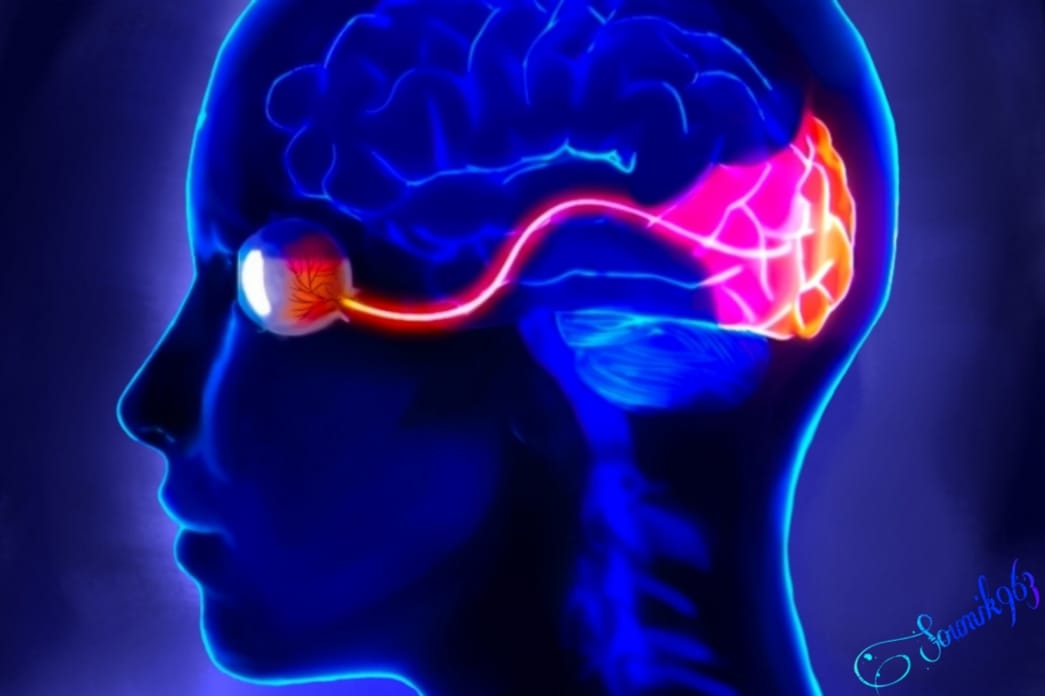
2. Asthenopia in defects of Ocular Motility: Development of Asthenopia in heterophoria depends on the state of sensory motor system and the general well-being of the patient. In patients of heterophoria, the dissonance between the deviation and the amplitudes of motor fusion results in Asthenopia. If the amplitudes are insufficient to cope comfortably with the deviation, asthenopic symptoms may grow. Vertical deviations are especially likely to cause symptoms, since the vertical fusion amplitudes are limited. Even if the amplitudes are adequate, patients sometimes develop asthenopic symptoms.
3. Asthenopia in Accommodation/Convergence insufficiency
A. Accommodation insufficiency: It is inability to accommodate without the help of convergence. Some patients typically complain of headache, eyestrain and intermittent blurring after 20-40 min of reading. Commonly, the patient has good vision with insignificant refractive error.
The typical patient is able to read Jaeger 2 print easily, but may be noticed to Squint or frown when reading. The diagnosis is made by placing +1.0 or +1.25 D sph. In front of each eye, an immediate positive response is bring out by a patient. The patient is seen to relax the facial muscles. 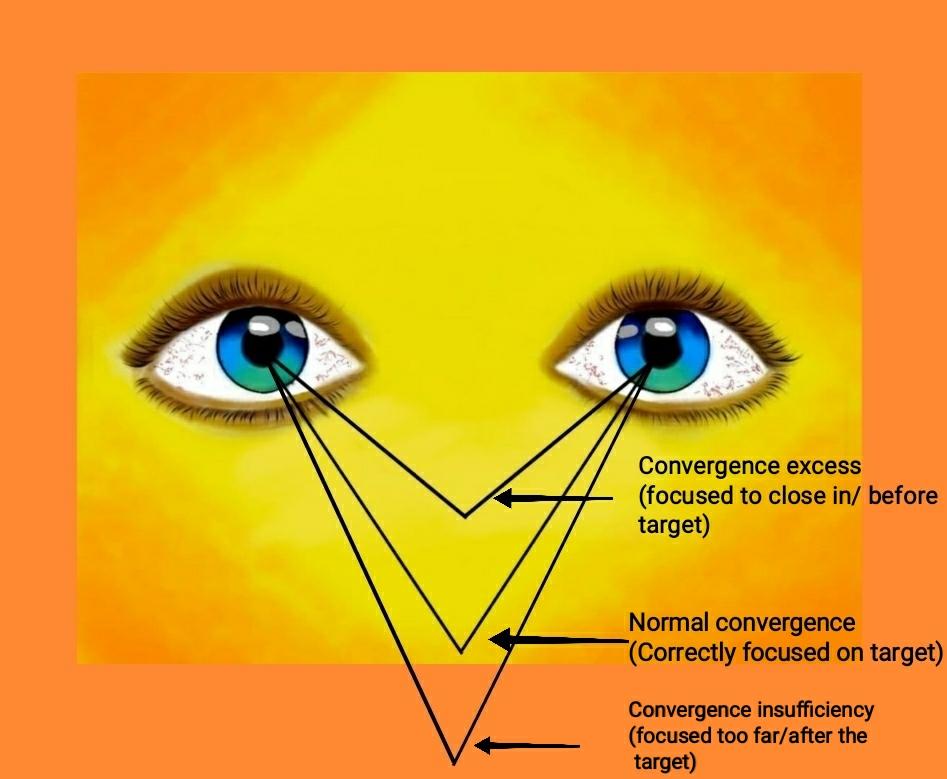
B. Convergence insufficiency: An absolute insufficiency is said to exist (in the absence of presbyopia) when the near point is greater than 11cm from baseline (9.5 cm from the apex of cornea) or when there is difficulty in attaining 30° of convergence. It occurs generally in Uncorrected myopes and is seen in hypermetropes and presbyopes when their refraction is corrected for the first time or in those suffering from accommodative insufficiency. General disease or infirmity due to illness, toxic conditions or metabolic or endocrine disorders may also be the cause of insufficiency. The diagnosis is based on the presence of orthophoria for distance, periodic increase of relative divergence as the near point is reached, the remoteness of near point ( beyond 9.5 cm) ,the low prism convergence ( below 15 D) and normal prism divergence.

